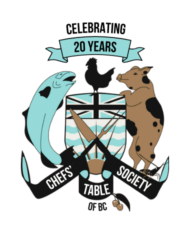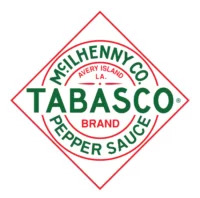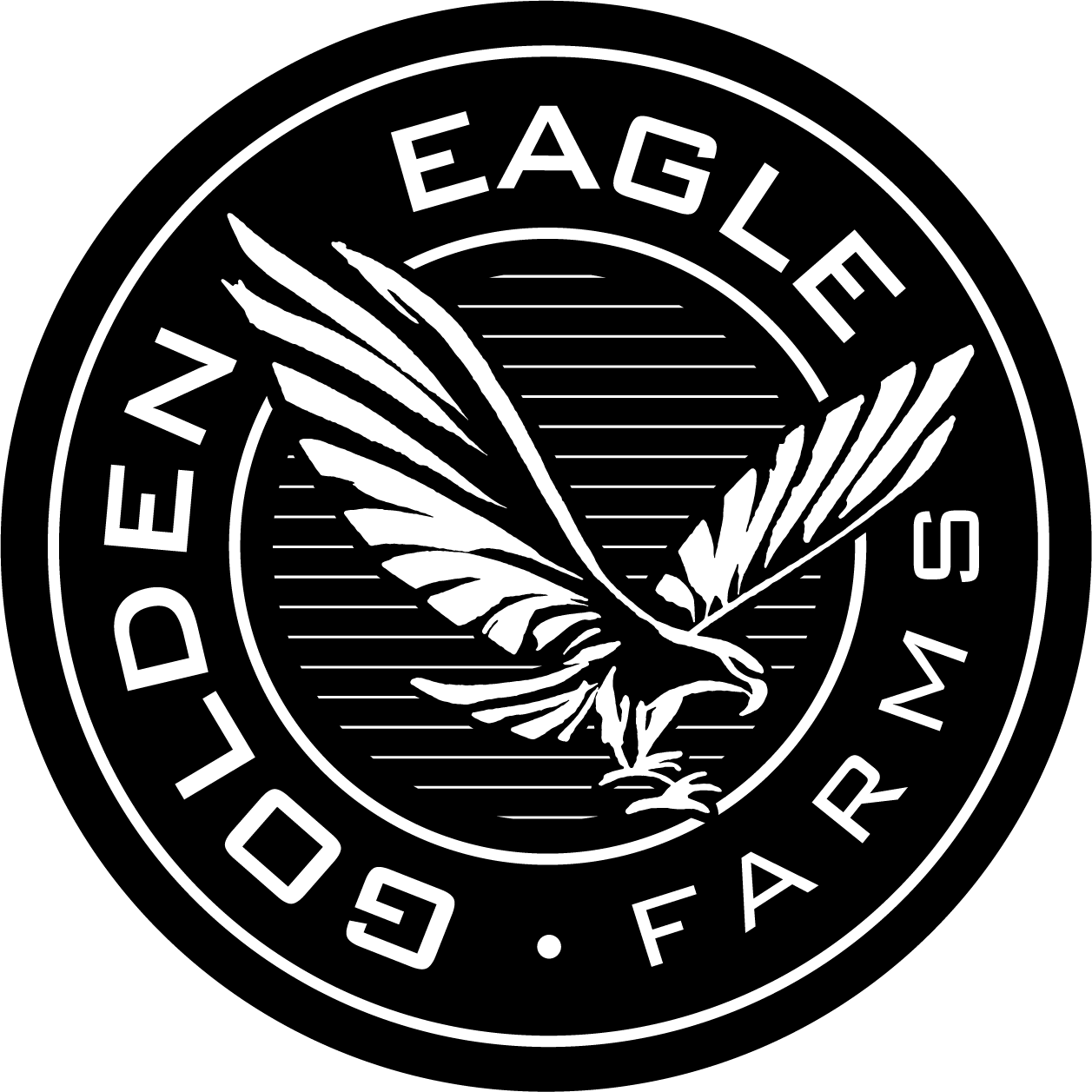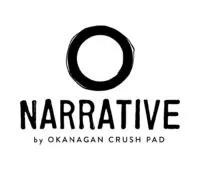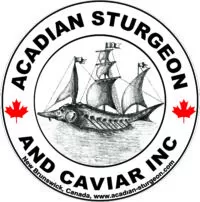Upon the conclusion of COOKSCAMP 2022, we took a short rest and some time to let the experience sink in and collect Camper's feedback. We spent a lot of time curating speakers and activations we thought were extremely pertinent to our industry right now. From the feedback we got from Campers at the event and through our post event survey, Camper's thought so too. We wanted to make sure some of the great takeaways and ideas were not lost, so we had people taking notes at each COOKSCAMP activation. Below is a synopsis of those notes that have since been reviewed by each speaker. We hope this gives everyone insight to what was shared at the event.
- Chefs' Table Society
Keynote Address
- Normand Laprise, Restaurant Toque
Chef Normand Laprise's address mainly focused on the future of the restaurant industry and how to best make sure your concerns as a small independent restaurant is heard. Chef Laprise and 67 other restaurateurs decided to start their own independent restaurant association. The Association Restauration Quebec was a large province-wide association of all kinds of mostly chain restaurants and other food establishments. They didn’t necessarily have the best interests of the small independent restaurant in mind when they were lobbying the Quebec government for policy changes. La Table Ronde was born out of the need for representation of the needs of small independent restaurants. They hired the right people to speak the language of politics and got the attention of the Quebec government. They are working policy that will affect, import/export of food and wine, agriculture, fishing, small business, and much more. They have started the journey of paving their own destiny. One that is not tied to every McDonalds, Subway and Tim Hortons. Thanks to Chef Bruno Marti for assisting with translations.
I Love What I Do, I am Good at What I do, What’s Next
- Thomas Haas, Thomas Haas Chocolates
Thomas had no idea what he would be doing at 30 but went to work every day, and did his best to be better than the day before. With that in mind it never got boring. He has focused on tiny goals not a particular vision such as entrepreneur/business owner but the results accumulated. He believes the description of success ends with your heart…feeling good, having pride and purpose and celebrating the small victories every day.
“It’s in our hands to be curious”. Attitude more than training is key. Culinary school is the foundation and an open mind is the vehicle. Must be good with people – leave the ego at home. Every day is a NEW day.
The food industry is incredibly creative and flexible with many different opportunities. “Do what you love, be realistic, invest in the thing. Follow what makes you happy and success will follow you”. Put effort into figuring out who you are, see what drives you, see what gets you up everyday.
Mind the Bar, Lifeworks App
- Johnny Bridge, UBC Food Services
Mind the Bar is a not-for-profit organization dedicated to providing information and support resources for those in the hospitality industry who are struggling with depression, anxiety, thoughts of suicide, substance abuse disorder, addiction, or workplace harassment. Anyone can become a member on the Mind the Bar website: www.mindthebar.com under “Get involved”. Once the application is submitted, by email Mind the Bar provides a code which gives access to the “Lifeworks” app, FOR FREE. The LifeWorks app is available for download on any smart phone in the app store. The app was developed as a tool for workers, owners and managers alike as support for either for themselves or their staff. The application gives managers the ability to ask: “have you had the opportunity to speak someone?”, and then depending on their answer, guide staff in the direction of this app for further support. Once engaged in the app users are asked a series of questions that triage those users into suited supports. The app offers real time advice with working medical professionals at all hours. LifeWorks access can look like: up to 6 free counselling sessions, professional financial advice, or even two sessions with a lawyer. This LifeWorks service is all available 24hrs a day, 7 days a week to suit industry hour needs. Help treat your staff as the most valuable resource in your operation by sharing the means to a Mind the Bar membership and the LifeWorks app with them.
Mountain View Yoga - Jay Molloy
Learning to take time for your own well being is a lesson we all need to learn. A cook stands for a minimum of 8 hours a day everyday of their career. Learning the importance of positive body movement is just as much preventative medicine as it is good for your day to day ability to get and function. Learn to make it a habit while you are young. Be consistent and make it part of your daily routine.

Butchery Demonstration
– Ray Bucknell, Elevated Butchery and Jason Pleym, Two Rivers Meats
A very healthy and well looked after lamb from the Beerfarmers farm was transported to NAF on Sept 13th. The crowd was asked to not take photos and to be quiet as Butcher Ray Bucknell, dispatched the lamb. He and Jason pulled the lamb out of the trailer and hung it up by its hind feet on hooks and bled it. This is the first time a slaughter has been done as part of hospitality conference in western Canada. Ray talked about the quality of the lamb, where it came from and his own credentials as butcher, licensed slaughterman and owner of Elevated Butchering in Alberta. He took us through the whole process of skinning and ‘punching’ the skin from the carcass. Then through the removal of the offal. Many questions were asked about what he was doing, the tools he used and his other experience as a slaughterman, butcher and educator. When Ray was done, Jason, went through the different muscle groups on the carcass. He pointed out that the musculature and skeletal structure are basically the same for all lamb, pork, venison, veal, and beef used in the kitchens today. If you understand one of the animals use, then you really understand them all. The lamb was then prepared for cooking over the fire and enjoyed by all at the Family Meal on Sept 14th to showcase all the steps of farm to plate. For this kind of activation, the crowd was incredibly respectful, not taking any photos, asking good questions, and truly understanding why this is an incredibly important part of the education of anyone in the industry. Respect must always be given to the product.

Get to Know Your Farmer
- Jordan Sturdy, North Arm Farm
Jordan shared the history of North Arm Farm and his path to becoming a farmer – did you know he is a former ski patrol turned farmer and MLA? Jordan shared the economy of the farm noting how they consider who to sell to, how they sell, how they plan what to grow and the process of pulling the vegetables. He also shared interesting details about what he has learned through the years on what to grow and how to better store vegetables seasonally to have revenue throughout the off-season. North Arm Farm started with selling potatoes at the farm gate and through connections to Whistler chefs in the 1990’s such as Chef Bernard Casavant started selling to restaurants, and have built a thriving business selling through out Vancouver for coming on 35 years.
Wild Food Foraging Around North Arm Farm
- Chef Bill Jones, Deerholme Farm
As an educator, chef and teacher Bill focuses on plants that are good to eat (or medicinal) and also tries to teach you about the foods that are poisonous. Wild mushrooms are a complicated topic with many types and habitats. One important group are the mycorrhizal fungi associated with trees. In our area, Douglas fir is one of the prime trees for mushrooms like the chanterelle, porcini and pine mushroom. A healthy forest, however, is a mixture of different tree types. The actual fungi organism is a series of root-like fibers (called mycelium) - mushrooms are the fruiting body of the organism (much like an apple on an apple tree). Fungi help to extend the root system of trees and bring moisture and nutrients to the tree in exchange for some of the tree's sugars. Mushrooms can be associated with different trees (depending on the dominant species of the local forest). A good example is the pine mushroom, associated with the Red Pine in Japan but linked to Douglas Fir and Hemlock locally.
There are at least 5000 varieties of fungi in our area, very few are eaten (maybe about 50 species). Some are medicinal and some are poisonous. Many have unique conditions to fruit. For example, a type of morel mushroom loves to pop up after a forest fire. Much of the commercial harvest is from these "burn morels".
We also forage for many types of plants, berries and tree products. Plants are indicators of environmental health and can easily accumulate toxins like pollution and pesticides. This is one reason we don't recommend foraging near golf courses and urban areas. The best place to forage is as far away from human settlements as possible. Seasonality is also a big factor, greens and plants are usually best at the start of their lifecycle and most of their energy goes into producing flowers and seeds. Many of the wild plants are bitter when they have reached the end stages of their growth. On the other hand, plants that store nutrients in their roots are often best in the fall (after a growing season) and in the spring before the plant has a chance to start its new growth cycle. We often look to preserve these products when they are in prime shape and then use them throughout the year. Stinging nettles are a good example of this, we harvest in the spring, blanch, vacuum pack and freeze for up to 6 months.
Many plants are fragile and subject to overharvesting. We must be careful about the use of native plants and often focus on invasive species that have been introduced to our region. We are generally encouraged to harvest and eat these invasive plants. Blackberries are a good example, the dominant species is now the invasive Himalayan Blackberry. It has supplanted the native Trailing Blackberry in many areas.
Trees are also a rich source of foraging, from nuts to elder flowers to needles of fir trees they are rich sources of food and medicine. Grand Fir needles are one of the favourites. The needles are high in vitamin C and possess a lovely grapefruit zest character. They have been used in a soothing tea (good for the throat and lungs) and are often infused into alcohol to make a delicious concoction.
It takes an investment in time to discover the full joys of foraging. One key rule is to only eat products you can identify with 100% accuracy. There are plenty of mushrooms and plants out there that can ruin your day if you make an error in identification.
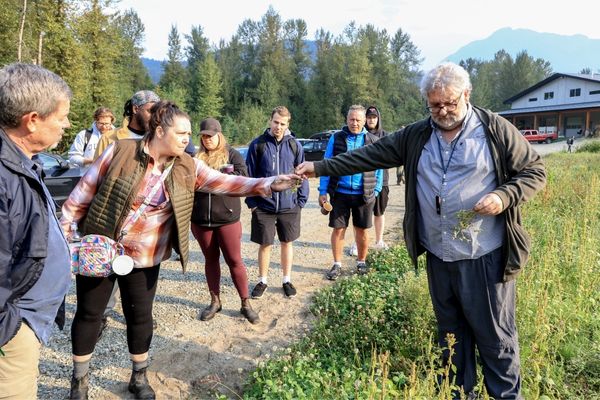
Everything You Need To Know To Find The Right Knife
- Kevin Kent, Knifewear
Kevin went through the various styles of knives used in the kitchen and the pros and cons of various steels used in their manufacture. How to take care of them and how to keep a razor sharp edge on them. He then went into his advice to the industry about how to better retain and treat your staff. He talked about how everyone is paid a living wage at Knifewear. How after a short probationary period, they are given a benefits package and become part of profit sharing within the company. “Restaurateurs need to learn that if you take care of your employees, they will in turn take care of your business and customers and profit will be the natural outcome of that. It has worked for Knifewear for almost 15 years and can work for pretty much any business that puts their employees first”, says Kevin.
Creativity Talk
- Angus An & Julian Bond
Angus An had his talk tweaked as his friend and colleague, George Vergette was unable to attend because of an illness. Chef Julian Bond happily jumped in to help and was Angus’ partner in this conversation.
Angus believes that for creativity to be successful you have to have perimeters or limitations put upon the the thing you are trying to create.
A blank canvas or plate is far too vast and endless to just have something great spring from nothing. Until you start to study the limitations, do you then start to see the wonderful possibility of creation. The colours of the palette, the seasonality of the vegetables and their ripeness.
Famed architect Frank Gehry once said, after building codes, site limitations, clients, budget, he only has 15% true creativity left in each project, it is up to the artist to maximize that 15%. That is where the truest creativity lies - within what you can do with that 15%
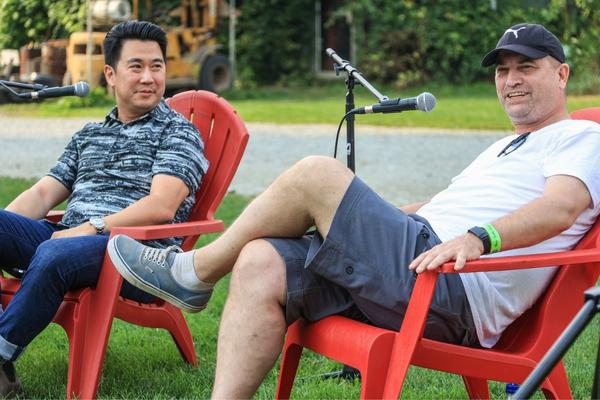
CREATIVITY: How to Navigate the Future of Our Industry
- Corey Mintz, Shira Blustein, James Iranzad, Christie Peters
Corey: "I was a cooking school student in the 90s, a cook in the 2000s and then a restaurant critic in 2007. So, I’ve had a shifting perspective. We saw a growth in food and restaurant as culture, which directly correlated to the rise of food television. And because of that, there was a surge in culinary school enrollment. I’m told that it doubled in those years. So there was effectively a baby boom of young people who entered the field, believing that they were starting creative, middle-class careers. Then came the recession, with a lot of chefs leaving their career-track jobs when high-end restaurants emptied out. They opened their own nose-to-tail, 30-seat restaurants and at the time, there was a lot of talk about how these chefs were democratizing fine dining by not spending money on table cloths and fancy rooms. But I think the real secret sauce was importing the labour standards from high end dining — getting people to work 14 hours for 10 hours of pay. So these big shifts helped each other until they didn’t. Because within five years, that generation, as you say, got smarter. The people who got into the industry based on what they saw on food tv, started to say, my back hurts, I’d like to start a family, to have reasonable hours, to not be screamed at. At the same time, by 2015, social media had not only enabled workers at different restaurants to connect with each other and compare notes, but also to self-promote and build their own brand. For the first time, they could bypass the traditional apprentice/master relationship that had defined cooking careers until then. As these 30-somethings were getting out, the same volume of 20-somethings were not getting in. Because they weren’t going to work 14-hour days, for very little pay, while being yelled at. And that’s when I started to hear every chef ask, “where are all the cooks?” That’s when the attrition rate changed and the scales tipped. The previous generation was not being replaced, because the next generation had wised up that these were working-class jobs and not middle-class careers. And the industry didn’t do anything to address it. At the time, chefs and owners just blamed young people and said, “these millennials or gen Z kids don’t want to work”. And then, Covid. So here we are Post Covid trying to pick up the pieces of the industry and make viable businesses again. Now, that is not only, running a business but looking forward in time at who will be your next Chef or manager. How do we change the mistakes of the last 20 years and make the restaurant business a place to be thought of as a good, enticing, and lucrative career path."
Christie suggests raising prices, to pay people better and as an owner to build new establishments to allow people to grow and move up.
James: "Take care of the employees we have, to have better employee retention. Adjust, staff and employee expectations about the reality now."
Shira is now offering better wages, a health spending account, professional counselling if needed. She has restructured the tips to be more evenly spread out amongst the team. She would also love to abolish tips but doesn’t believe the public is ready to give up the practice. We can slowly change the industry by changing how we lead people, and it should start at the top. Looking after the needs of our employees, having an open-door policy for their concerns. Always remembering that, “hospitality begins with our team”.

Stand Tall Pilates - Tina Saxton
Pilates seems very intimidating to many people. What Pilates really does is quite simple. It’s about strengthening the smaller muscles around your joints to support the joints better. It’s goal is to improve posture! The muscles, tendons and ligaments throughout the body are all literally connected. As an example, if you have a sore left shoulder, it might be from standing in an unbalanced manor on your feet. Small adjustments and very simple exercises can greatly reduce the symptoms of some of these nagging problems. You can of course, take Pilates incredibly far and use for not just posture but as a calisthenic workout, on the mat, or using some of the specialized equipment such as a reformer or cadillac machine
From Tip To Tail Sturgeon - Cornel Ceapa, Acadian Sturgeon
Cornel Ceapa is one of the most knowledgeable persons in regards to the sturgeon in all of the world. His operations in New Brunswick (Saint John and Charlo), use a combination of fish farming and wild harvesting technologies and only uses NB native sturgeon species. They produce 3 unique and very different varieties of caviar and use the sturgeon "tip to tail", in a sustainable, certified Ocean Wise way.
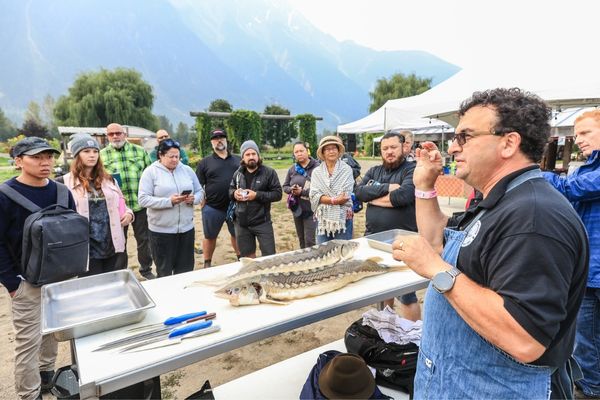
In-Kind Sponsors
Averill Creek
BC Hospitality Foundation
Cioffi
Continental Importers Ltd
Ecowise Hydrochem Solutions Inc
Eska Water
Fanny Bay Oysters
FoodSupplies
Geoduck Underwater Harvesters Association
The Gourmet Warehouse
Island Life
Johnston's
Medium Rare Chef Apparel
North Arm Farm
North Vancouver Island Chefs Association
Okanagan Chefs Association
Phillips Brewing & Malting Co
R&B Brewing Co
Rossdown Chicken
Russell Brewing Co
Spirit Wares Wholesale
Terra Breads
Thomas Haas
Toque
Unsworth Vineyards
Vancouver Island Brewing
